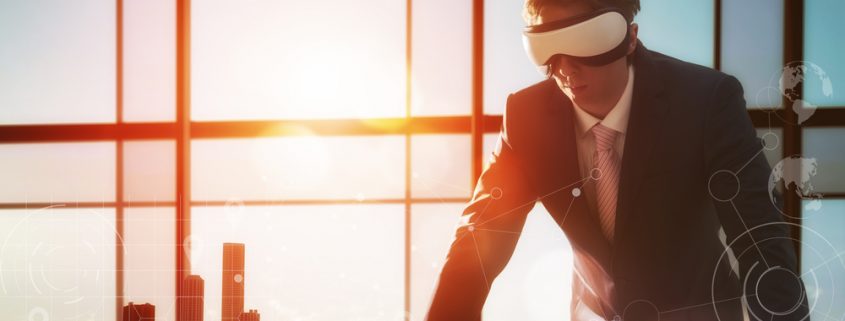Virtual Reality and Automation
Virtual reality is rapidly entering the marketplace, with technological improvements over the past few years increasing quality while driving down costs. For as little as $15, someone can enjoy VR using their smartphone with the Google Cardboard.
Like automated systems, virtual reality is enabling business around the world to transform their practices. The two technologies are similar in offering an innovative solution that enables businesses to become more productive and creative.
Training
When virtual reality first appeared in the market, the most applicable use commercially seemed to be training. VR is an active medium, requiring engagement to function, commanding your attention and encouraging you to interact and make choices. This is in stark contrast to traditionally passive forms of training such as tradition text or video.
Virtual reality offers an immersive experience while eliminating the costs associated with creating a physical environment. A famous example is the US Navy replacing their underwater training in pools (which was expensive to fabricate and maintain) with virtual reality training. This offered the same experience for a lower price with the added benefit of location flexibility.
Project Management
Other industries that could greatly benefit from VR are health, construction and design. This includes both training as well as project management. Products that are in concept stages or large scale projects like buildings can be viewed interactively in VR before the build is complete.
This gives people the ability to immerse themselves in every aspect of a project to bring it to its full potential. When it comes to marketing and sales meetings, pre-visualisation through VR offers a way to show rather than tell, especially when the pitch involves introducing new technologies or concepts.
New Technologies Representing the Future of Business
The big link between virtual reality and automation is their mutual role in transforming commercial practices in the future. More and more companies are adopting these technologies and using them to become more agile, productive and creative while cutting costs.
As the workforce increasingly fills with young, digital natives, utilisation of these technologies will be normalised. Think about capital-intensive industries such as automobile production, oil and gas, refining and power generation. They must preserve and institutionalise their industry knowledge efficiently and effectively to sustain operational excellence moving into the future. VR models offer the perfect solution to improve and develop skills amongst a new workforce in a range of critical functions and tasks without the risk.
Organisations that fail to keep pace and utilise the huge benefits of these technologies are doomed to fall behind, whether as a result of reduced productivity or increased costs. Automated systems can reduce power bills alone by 25 per cent, not to mention the time it saves by centralising control over technology and eliminating the risk of technical failures.
About Our Automation Solutions
Our team at Automation Associates develop tailored automation solutions for businesses based on their needs. We strive to help organisation operate more efficiently and effectively by creating spaces which encourage creativity, collaboration and productivity.
For more information about how we can help your business move forward with automation technology, explore our services or get in touch with our team.



